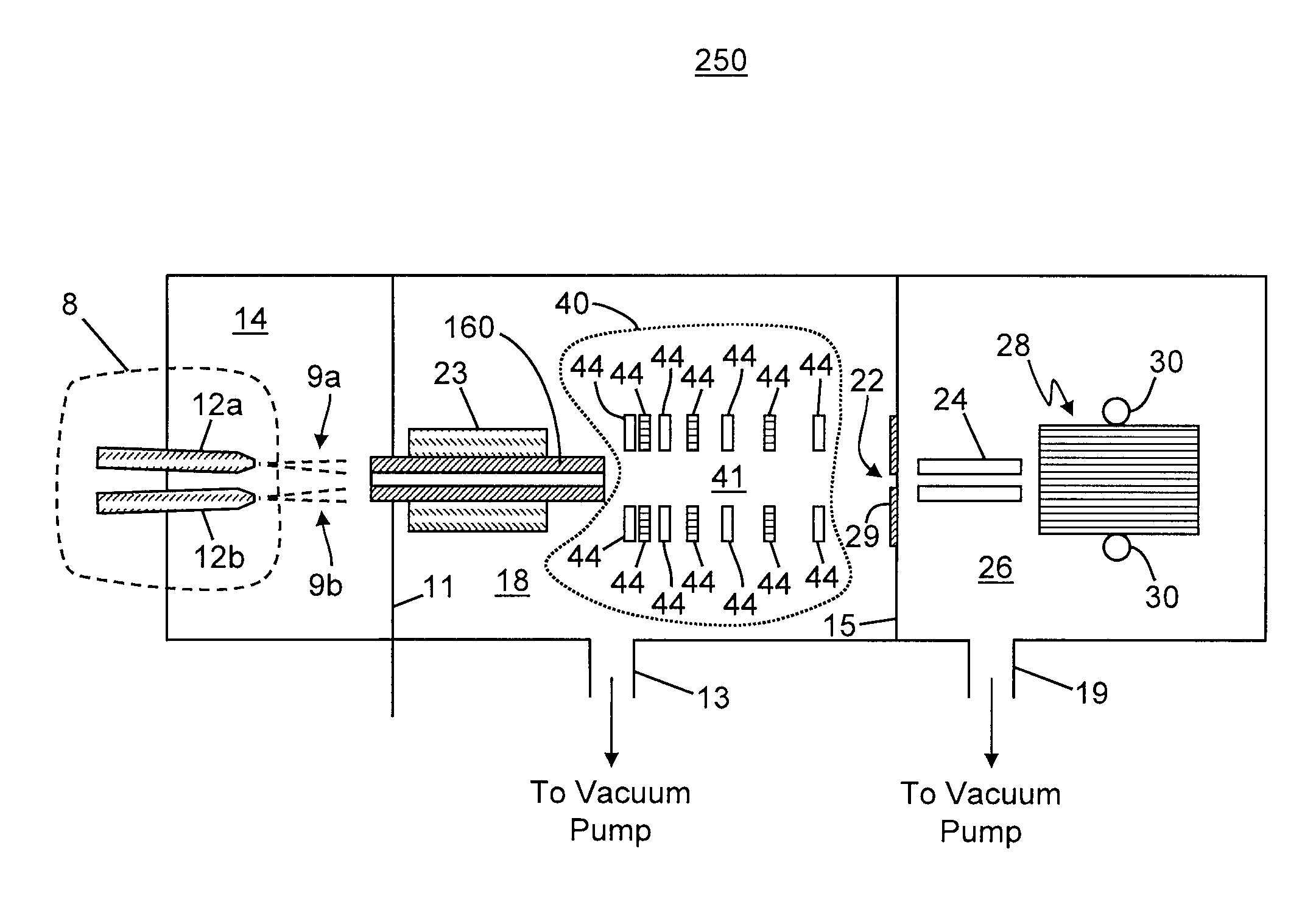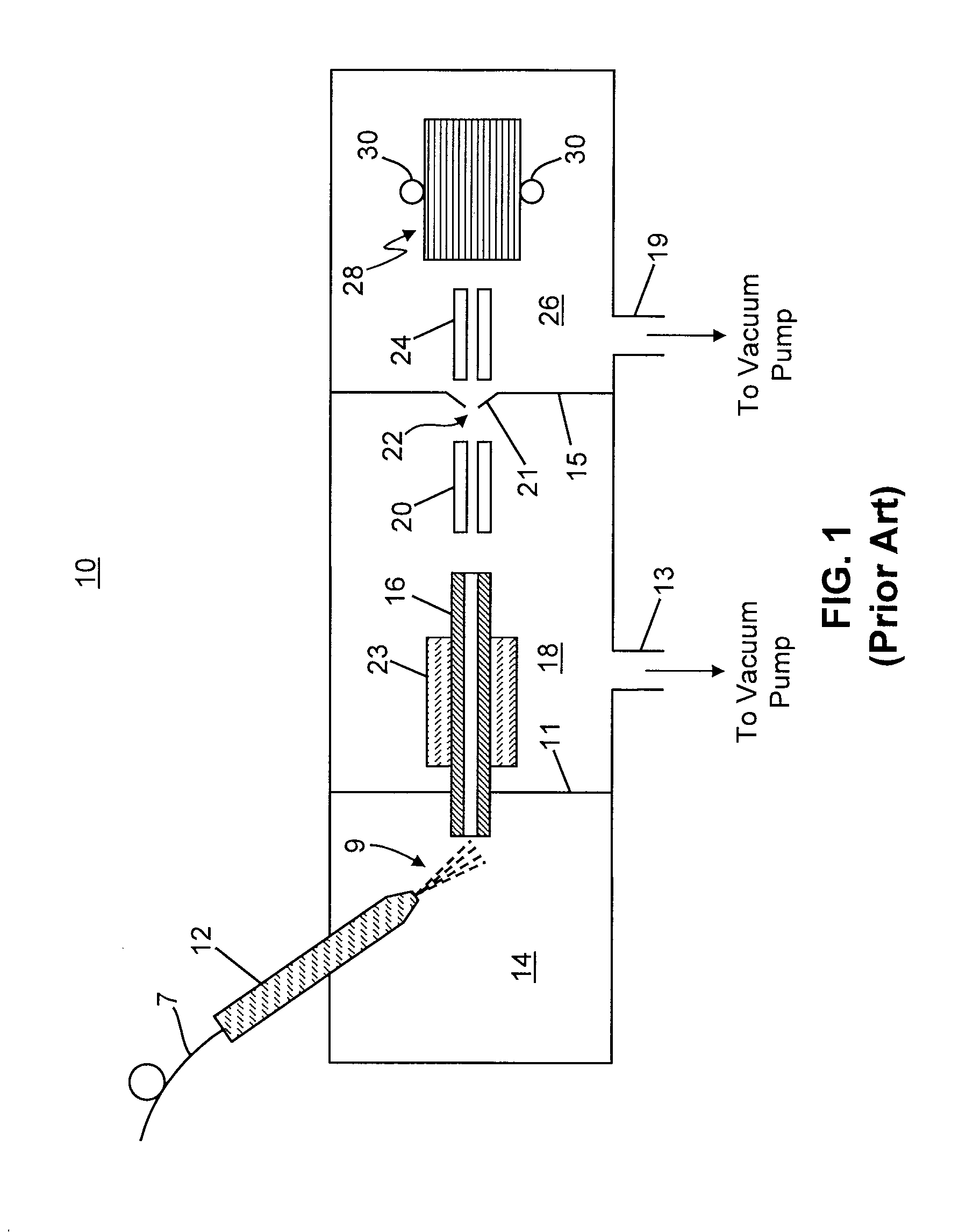Ion transfer tube having single or multiple elongate bore segments and mass spectrometer system
a technology of mass spectrometer and ion transfer tube, which is applied in the field of mass spectrometer system, can solve the problems of limited maximum temperature that can be applied to the ion transfer tube, limited experimentally, and inability to effectively match the round-cross-section bore, so as to achieve the effect of maximizing either the efficiency of transfer
- Summary
- Abstract
- Description
- Claims
- Application Information
AI Technical Summary
Benefits of technology
Problems solved by technology
Method used
Image
Examples
Embodiment Construction
[0041]The following description is presented to enable any person skilled in the art to make and use the invention, and is provided in the context of a particular application and its requirements. Various modifications to the described embodiments will be readily apparent to those skilled in the art and the generic principles herein may be applied to other embodiments. Thus, the present invention is not intended to be limited to the embodiments and examples shown but is to be accorded the widest possible scope in accordance with the features and principles shown and described.
[0042]To more particularly describe the features of the present invention, please refer to FIGS. 3 through 21 in conjunction with the discussion below.
[0043]FIG. 3 is a cross sectional view of a portion of an ion transfer tube, ion transfer tube 100, in accordance with various embodiments of the instant teachings. The internal bore of the ion transfer tube 100 comprises a slot 64a in the tube material 102 that ...
PUM
| Property | Measurement | Unit |
|---|---|---|
| pressure | aaaaa | aaaaa |
| diameter | aaaaa | aaaaa |
| height | aaaaa | aaaaa |
Abstract
Description
Claims
Application Information
 Login to View More
Login to View More - R&D
- Intellectual Property
- Life Sciences
- Materials
- Tech Scout
- Unparalleled Data Quality
- Higher Quality Content
- 60% Fewer Hallucinations
Browse by: Latest US Patents, China's latest patents, Technical Efficacy Thesaurus, Application Domain, Technology Topic, Popular Technical Reports.
© 2025 PatSnap. All rights reserved.Legal|Privacy policy|Modern Slavery Act Transparency Statement|Sitemap|About US| Contact US: help@patsnap.com



